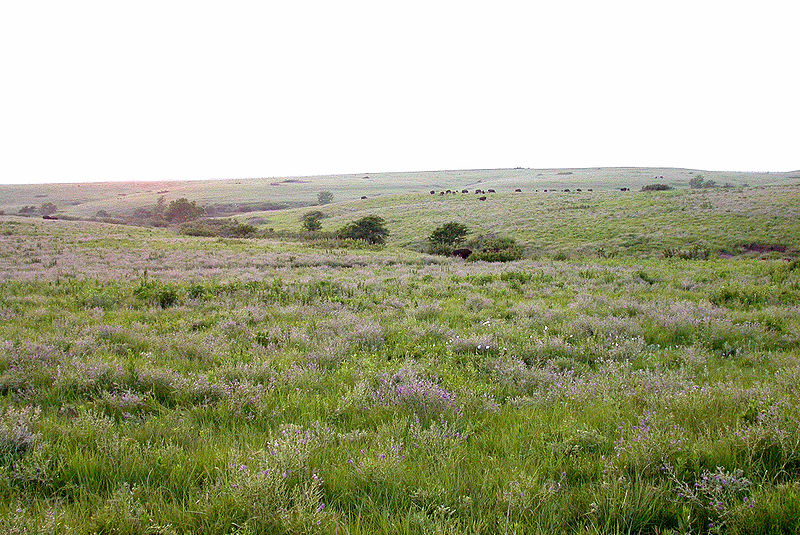Habitat
The genus
Phanaeus, comprising of 51 different known species to this day,
can be found anywhere from Argentina, all the way up to southern
points of the Midwest here in the United States (Price & May
2009). Within Phanaeus, these different species also
inhabit several different habitats, from tropical rainforest,
which seem to withhold the highest number of Phanaeus, to
broadleaf or coniferous forests, to savannas, grasslands, and
even semi desert like regions (Edmonds 1994). The species
Phanaeus vindex is most abundant here in the United States and
can be found in the majority of the different sorts of habitats
as listed above, from the grass parries of Kansas, to the dry
desert like regions in Arizona, to the more forest like habitats
in Virginia. Something unique and interesting is that the
P. vindex found to the north seem to have a darker shade or
color than those that live in the southern portions of the
United States (Edmonds 1993).
 Considering these beetles live
in the ground, it has been found that P. vindex seem to prefer
more clay like soil, as opposed to more loose and sandy soil
(Blume & Aga 1978). Another large factor that plays a role
in where P. vindex beetles live is where there is a high
abundance of food, just every other animal out there.
Since P. vindex can also be referred to as a species of dung
beetle, it is not unknown by most that they feed on feces of
other animals. It has been discovered through research
that P. vindex prefer herbivore feces, and specifically swine
feces (Blume & Aga 1978). Therefore, we can assume higher
populations of these beetles can be found near regions where
there is a higher abundance of pigs or hogs. This could be
one contributor as to why there is such a high population of
them in the southern states, where there is a much higher number
of wild hogs and other species of pigs. It can be assumed
that the majority of the pig feces that these beetles feed on
are from pigs that live on farms. For more on what farmers
grow in these regions visit this
website. If pigs peak your
interest, take a look at this
website!
Considering these beetles live
in the ground, it has been found that P. vindex seem to prefer
more clay like soil, as opposed to more loose and sandy soil
(Blume & Aga 1978). Another large factor that plays a role
in where P. vindex beetles live is where there is a high
abundance of food, just every other animal out there.
Since P. vindex can also be referred to as a species of dung
beetle, it is not unknown by most that they feed on feces of
other animals. It has been discovered through research
that P. vindex prefer herbivore feces, and specifically swine
feces (Blume & Aga 1978). Therefore, we can assume higher
populations of these beetles can be found near regions where
there is a higher abundance of pigs or hogs. This could be
one contributor as to why there is such a high population of
them in the southern states, where there is a much higher number
of wild hogs and other species of pigs. It can be assumed
that the majority of the pig feces that these beetles feed on
are from pigs that live on farms. For more on what farmers
grow in these regions visit this
website. If pigs peak your
interest, take a look at this
website!
Now, within these regions, these dung beetles live inside a simple burrow in the ground. Often times during the dry seasons, or in the colder months, the beetles will stay under ground in their burrows until the warmer and rainier months. During the times that they are active, the burrows serve as a safety spot from predators and for eating the dung. When the beetles find feces to feed on, they create their burrows, and push the feces into the hole or burrow. The space in which they stay under the ground is referred to as the gallery (Price & May 2009), which is usually closed off from the entrance of the hole with bits and pieces of dirt and soil. With the burrow closed up, and feces in the burrow, the beetles do not have to worry about predators, or other feces feeding organisms invading their homes and either eating them or their food. With a substantial amount of food, the beetles can stay under the ground for a relatively long time, sometimes upwards of 2 or 3 months (Price & May 2009). All in all P. vindex is a rather unique species of Phanaeus, given the fact that though they may prefer more clay like soil, it does not restrict them from living in all sorts of different regions and different types of habitat.
Feeling lost? Click here to go back home! If not, continue on to Adaptation!
To see where we got our information, go to the References page!